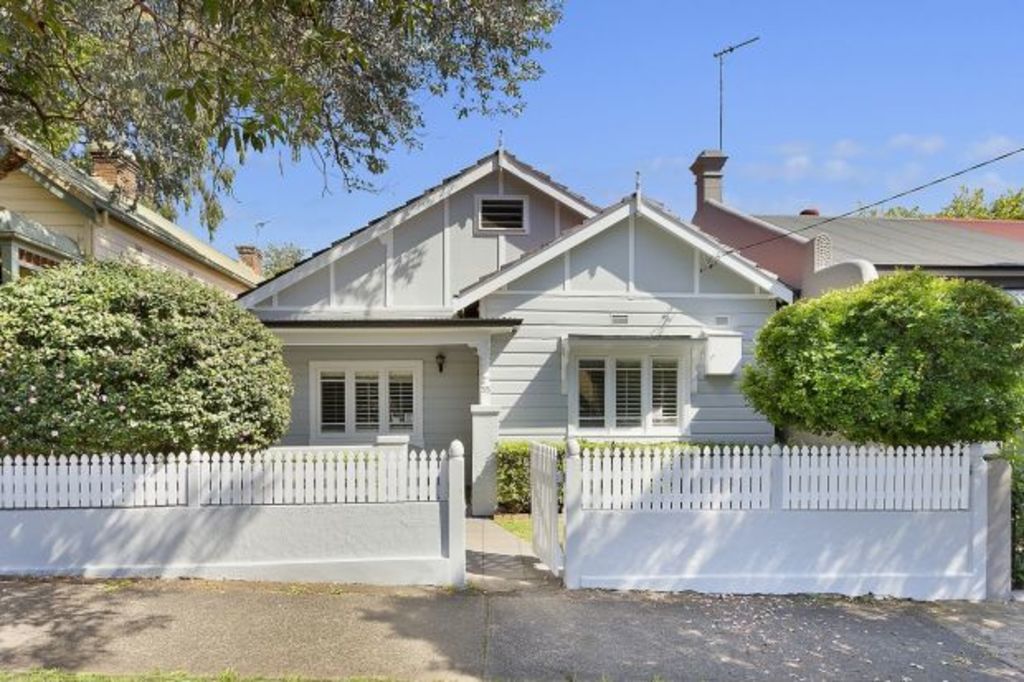Making the first move: Why the first property you buy is the most important of all

House hunting can be emotionally exhausting, especially when time, effort and money is invested into trying to buy a property, only for it to unfortunately not work out.
Exasperated buyers can be tempted to make rash, emotional decisions, especially when encouraged by parents to get a foot in the door.
Buying the wrong property because of desperation and pressure can, however, be a dangerous move.
The first purchase comes when buyers are least experienced in real estate, and most impressionable.
Arguably, however, it’s also the most important decision because it can significantly affect one’s financial position further down the track.
Comparing two median-priced houses in Sydney, a property with a 1 per cent higher annual growth rate will be worth almost $60,000 more after five years.
Using that same comparison in Melbourne, a residence with a 1 per cent higher annual growth rate will hit almost $50,000 more, five years down the track.
And thanks to compounding growth, the difference in dollars increases exponentially when the gap in growth rates is bigger.
- Related: Forget FOMO, it’s all about FOOP
- Related: Let Tom Hanks be your guide
- Related: Ten things to check before buying
Why long-term planning is critical

The further into the future you can plan, the better chance you’ll have of achieving your goals. Photo: Shapecharge
It’s easy to base property decisions on immediate wants and needs, without considering how circumstances might change, according to managing director of Property Planning Australia David Johnston.
“Short-term thinking is in our nature,” Johnston says. “But the further forward you can think, the better.”
Buyers who fail to plan their journey up the property ladder in the beginning risk hitting a roadblock several years down the track, as without a clear strategy, upgrading can become challenging, he says.
“They buy the first, maybe buy the second property and they’re stuck. They don’t know what to do next.”
A large family home isn’t an option for most new buyers, but if that’s the end goal, working backwards to determine the steps to get there is the key to making forward-thinking property decisions from the outset.
Thinking like an investor pays off

Location is arguably the most important decision for investors. Photo: Steven Woodburn
Although their strategies may be different, first-home buyers and investors have a lot in common, according to founder of Empower Wealth Ben Kingsley. “Whether it’s to get on the ladder or an investment property, we want those properties to grow and deliver,” Kingsley says.
Experienced investors know how to cut through sales hype and use facts to select an asset that outperforms the market.
But analysing fundamentals and understanding supply and demand should apply to any property purchase, Kingsley says. “If you can find that magic combination of high demand and low supply, the capital growth will follow,” he says.
Location is arguably the most important fundamental, as desirable features such as proximity to employment, transport and lifestyle amenities create demand in an area.
According to Johnston, “the location does the heavy lifting” when it comes to price growth, and middle and inner-ring suburbs prove to be the best long-term performers.
He says properties within a range of 20 to 30 per cent of the local median price would result in the best returns. “It’s where there is the greatest level of demand, in both what people can afford to own and what they can afford to rent.”
Overcoming the affordability issue

While outer areas may prove affordable, availability of land may dampen price growth. Photo: Paul Rovere
Even in a middle-ring area, the deposit required for a median-priced property can seem unachievable, and the majority of first-home buyers now rely on parents to help out financially.
Gifts or loans often come with the expectation that buyers will follow their parents’ advice, particularly around where to buy, but according to Kingsley, parents’ biases and lack of buying experience can result in poor advice. “More often than not they get it wrong, even though their hearts are in it and they want the best for their child,” he says.
Buyers could be tempted to seek affordability on the outskirts of capital cities, but Kingsley says the increased availability of land can dampen price growth. “The pressure on growth is lower because the supply side of the equation can be manipulated fairly easily.”

If your aim is to buy in an expensive inner-city suburb, an apartment may be a more sensible investment. Photo: Michele Mossop
Johnston says buyers should consider where they plan to live in the long term and try to buy a property with exposure to that local market, either in that suburb or nearby if it proves unaffordable.
If the goal is an expensive inner-city area, this could mean targeting an apartment rather than a house, providing it has owner-occupier appeal to ensure high capital growth.
What’s important to remember is that a first property is a stepping stone to achieving the eventual goal, which means buyers may need to realign expectations in the short term. “We all need to compromise,” Johnston says. “But how much are you willing to compromise on the property you live in to get into a really great location?”
Because location, after all, is the key.
We recommend
We thought you might like
States
Capital Cities
Capital Cities - Rentals
Popular Areas
Allhomes
More







